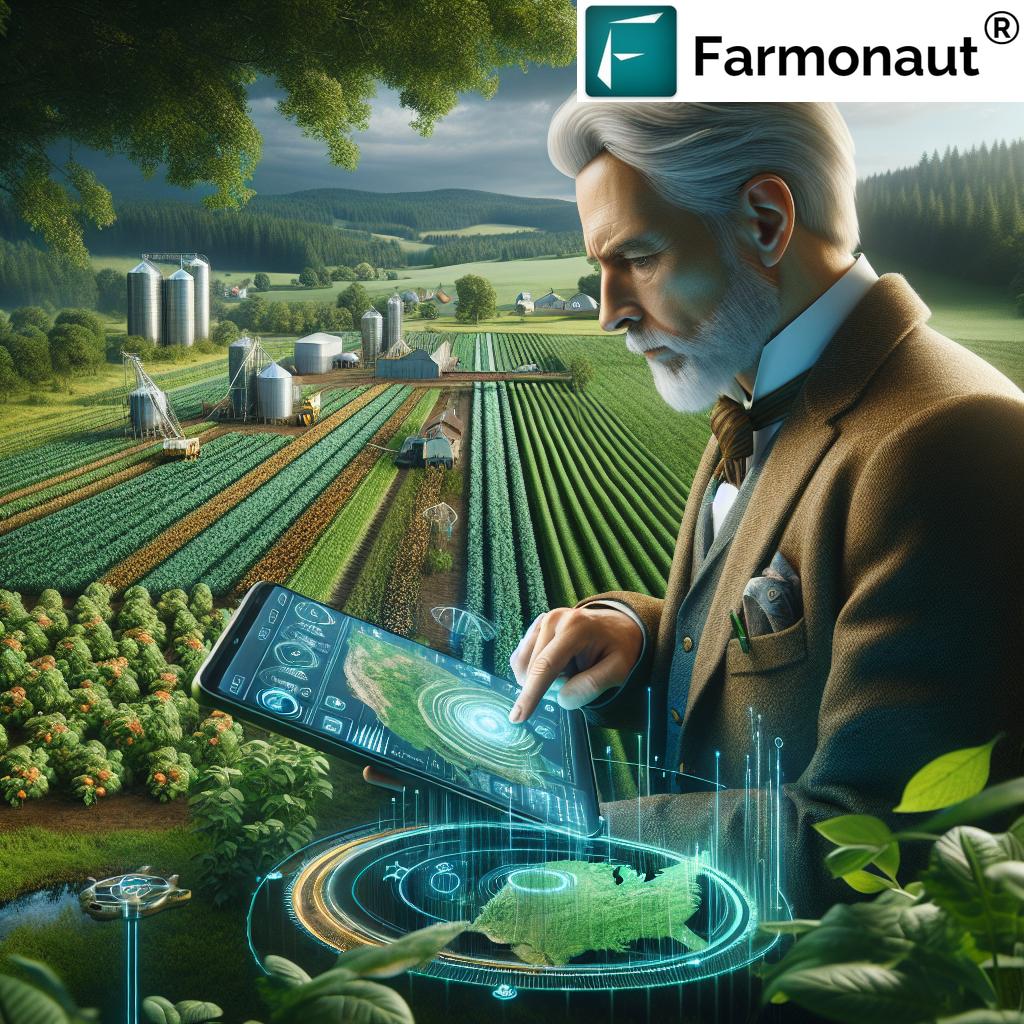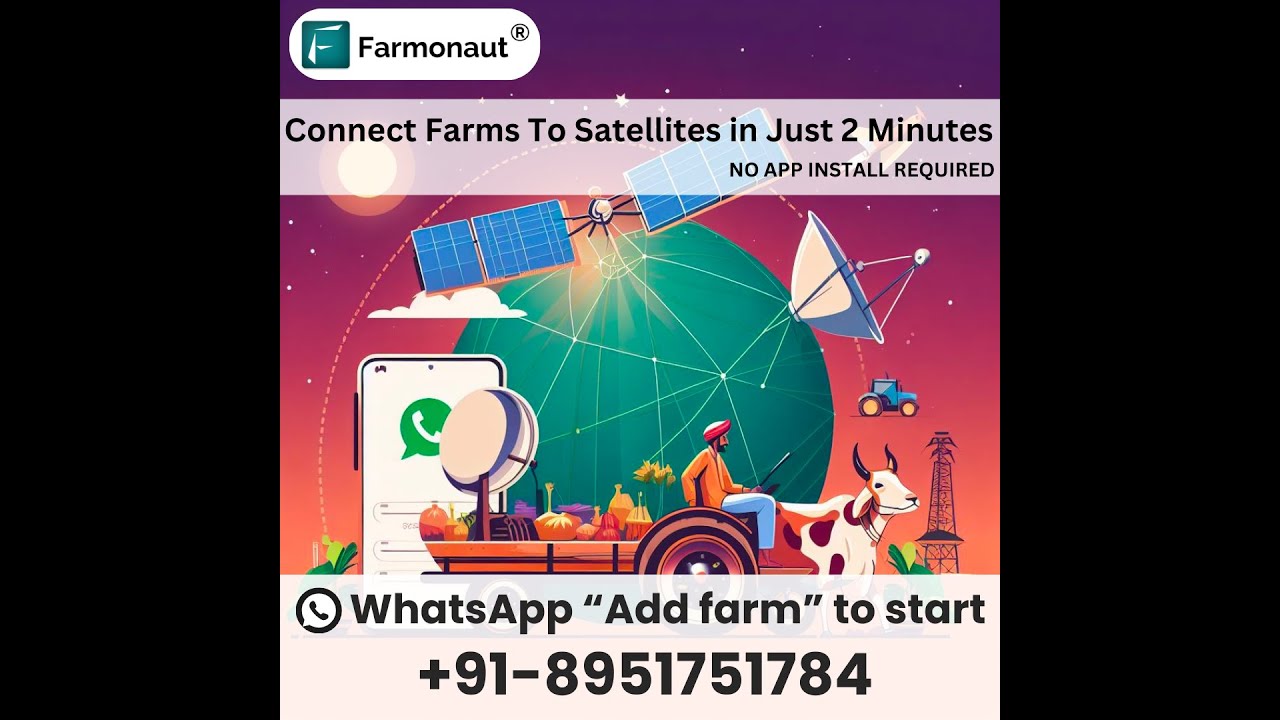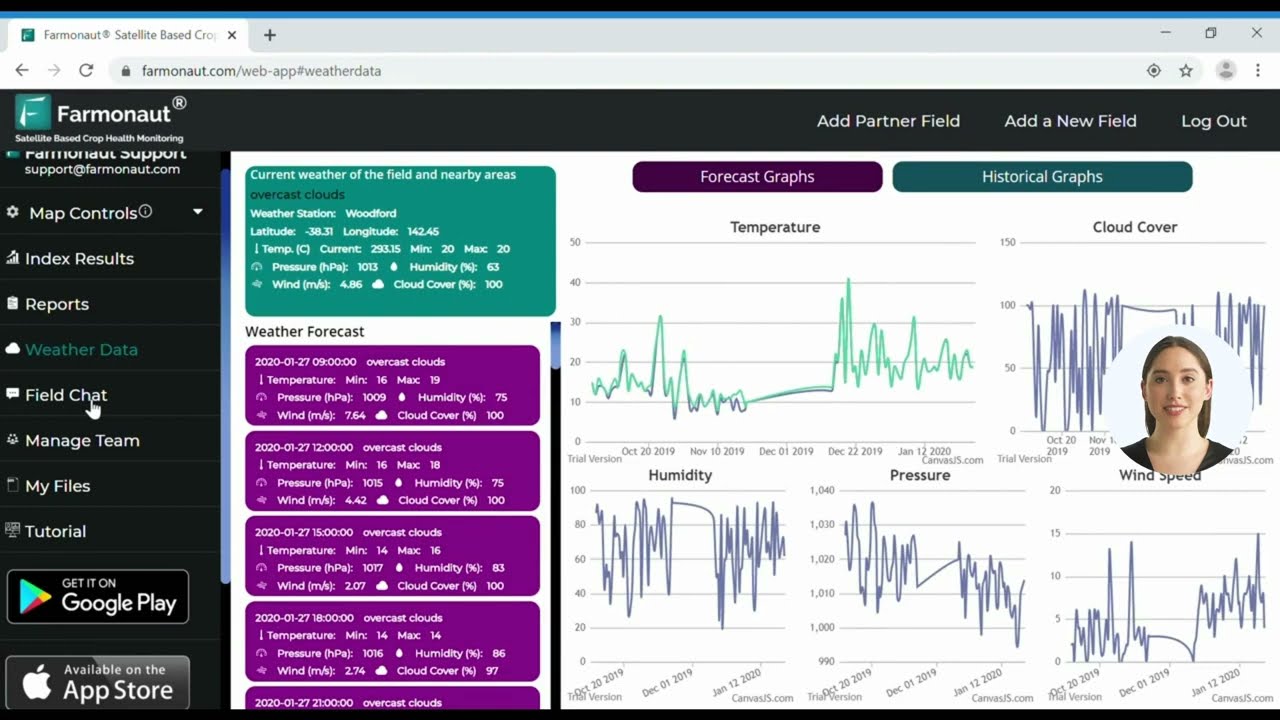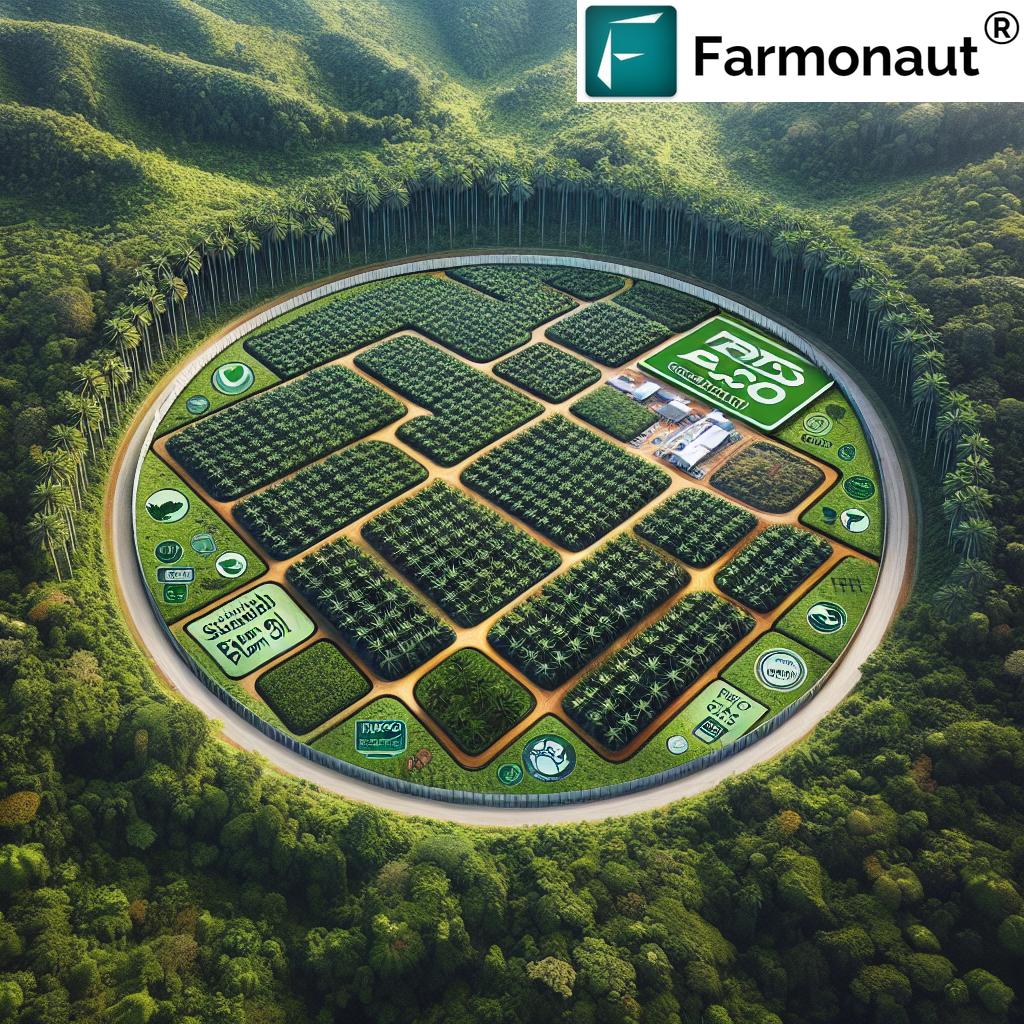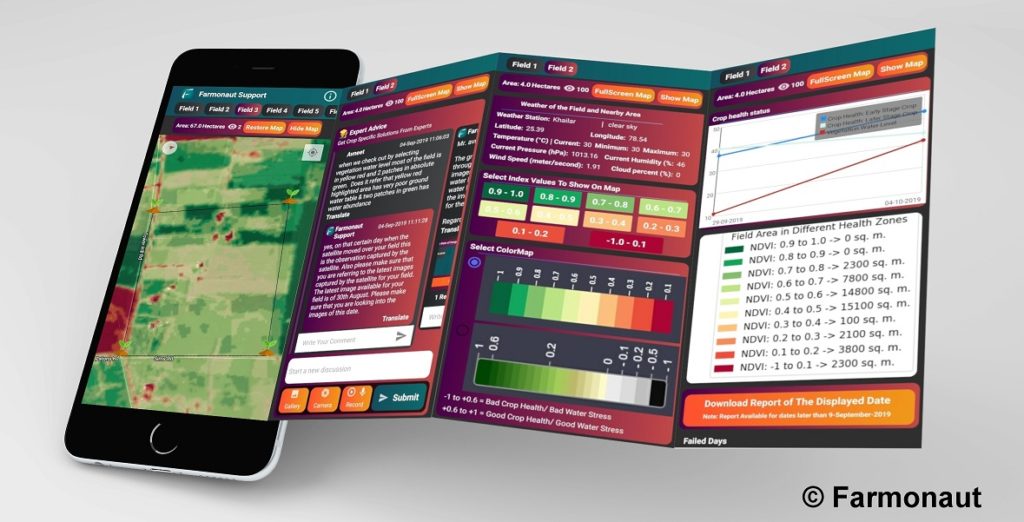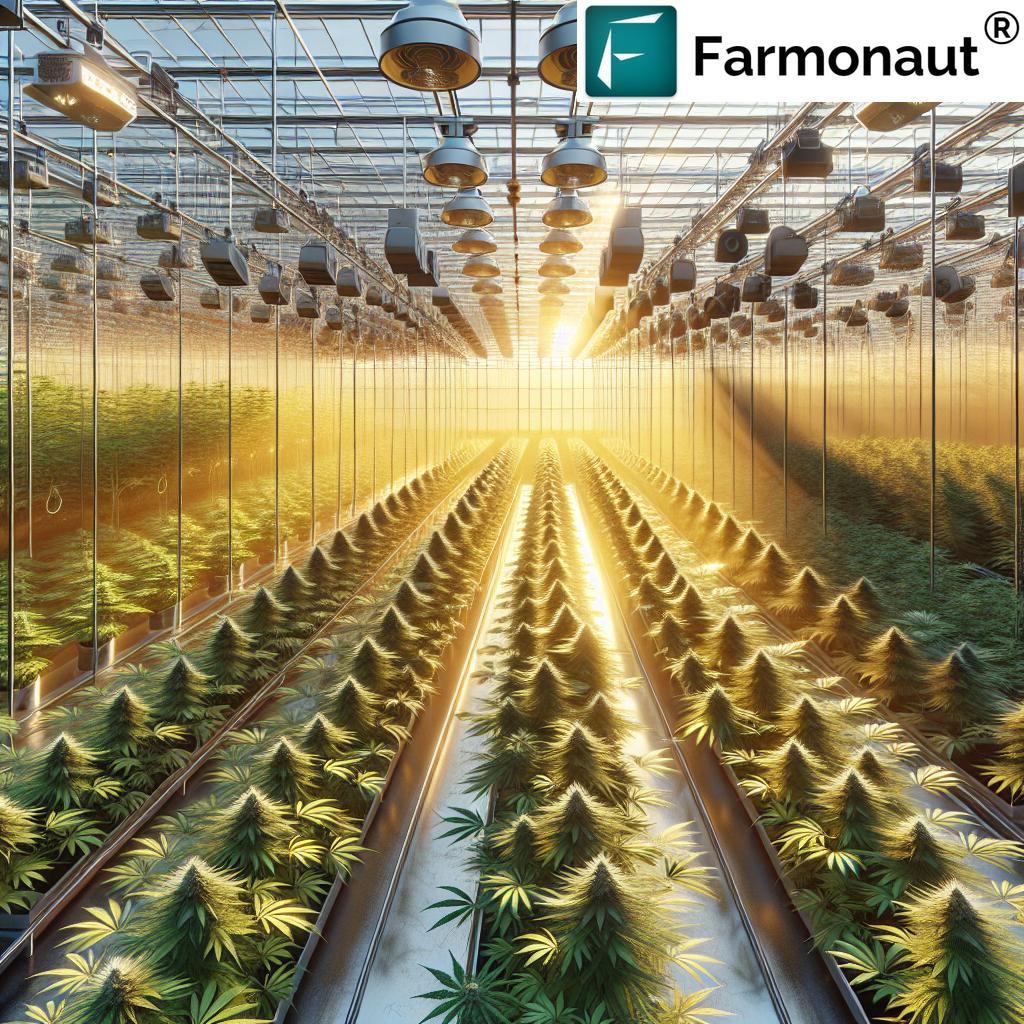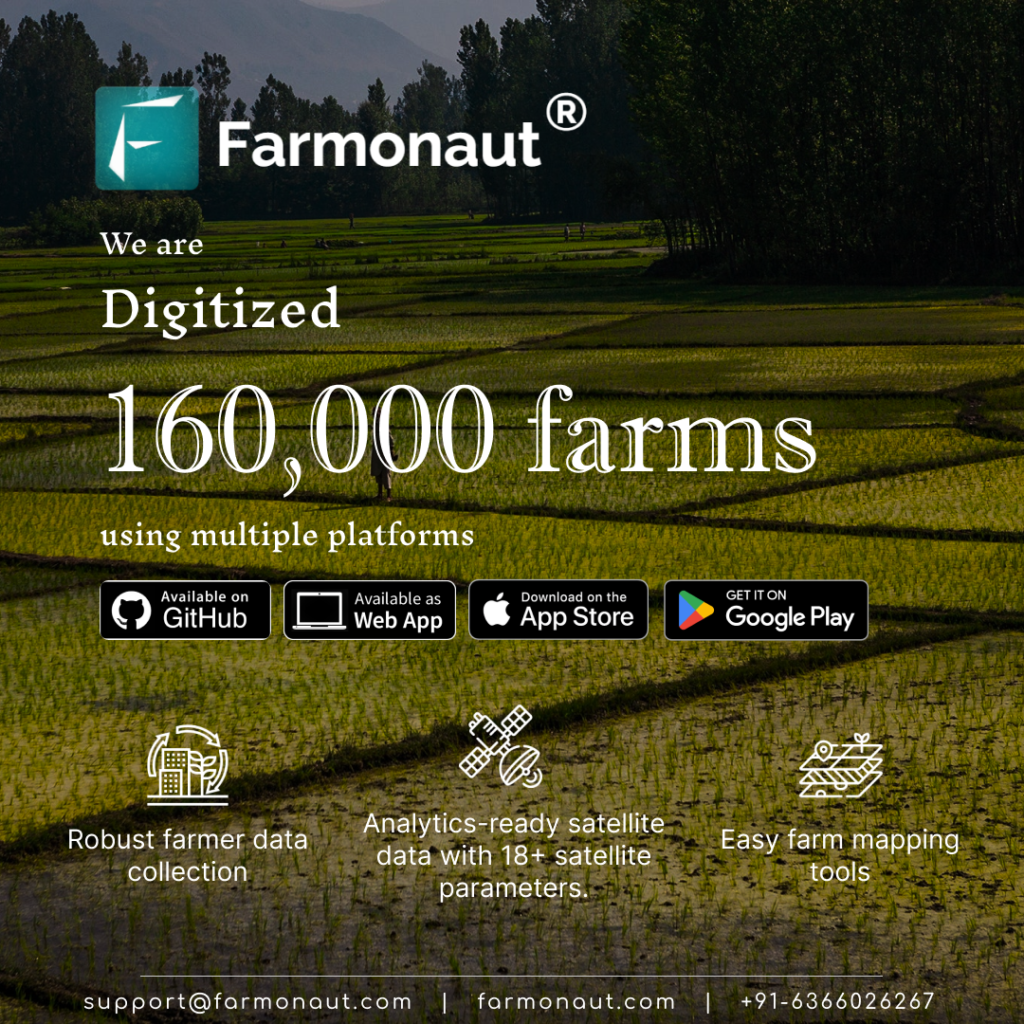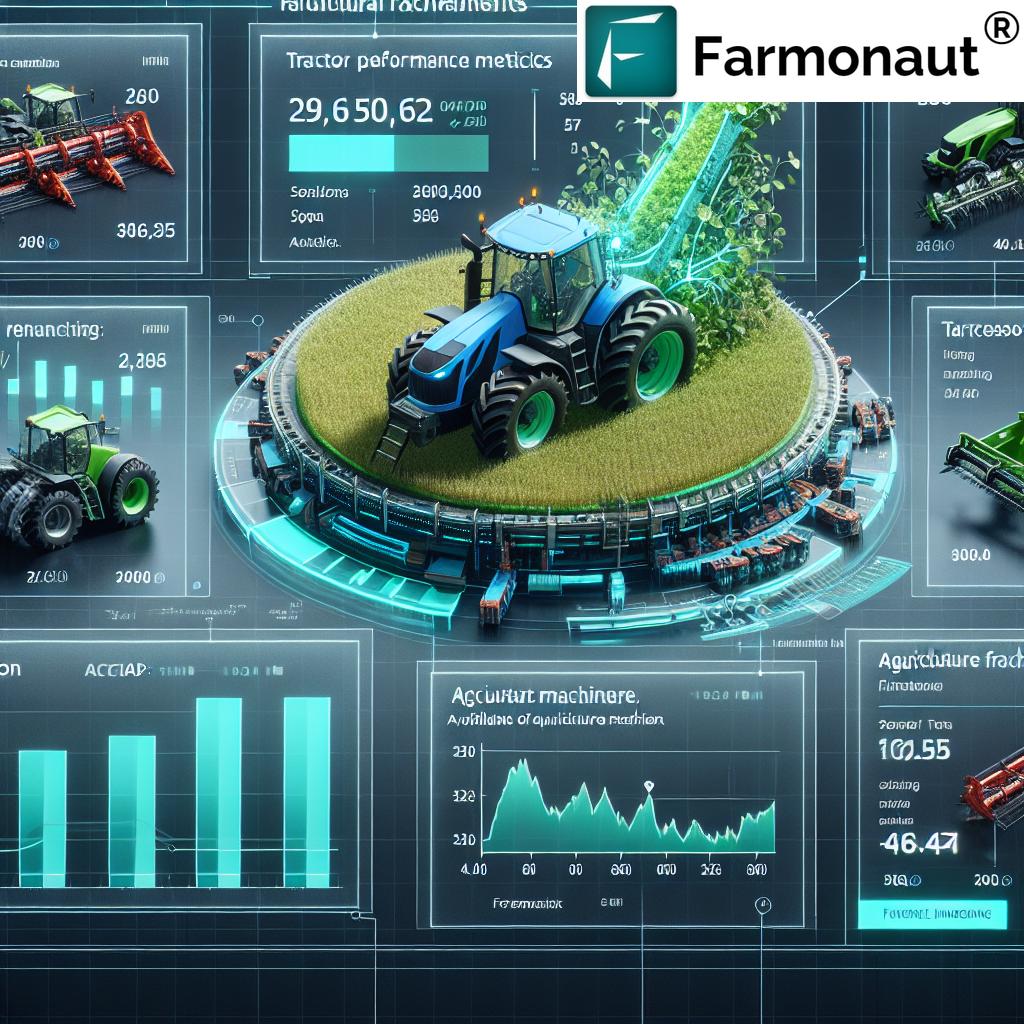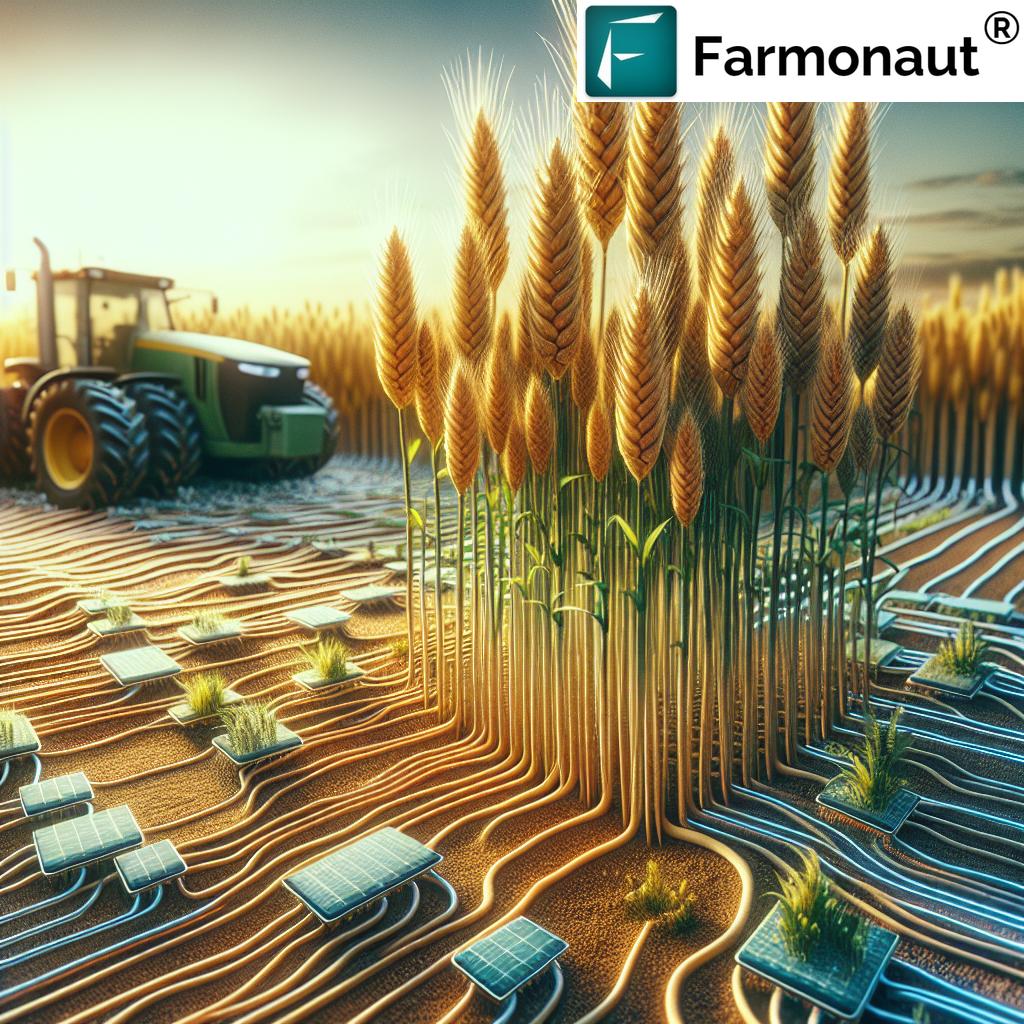Digital Marketing: 7 Innovative Agriculture Strategies for the Future
Table of Contents
- Introduction: How Digital Marketing Revolutionizes Agriculture
- Understanding Digital Marketing in Agriculture & Forestry
- Comparison Table: Digital Marketing Strategies in Agriculture
- 7 Innovative Digital Marketing Strategies for Agriculture & Forestry
- Implementing a Successful Digital Marketing Strategy
- Farmonaut: Powering Digital Transformation in Agriculture
- Challenges & Considerations in Agricultural Digital Marketing
- Frequently Asked Questions
- Conclusion: The Future of Digital Agriculture
- Farmonaut Subscriptions
“Over 70% of agri-businesses now use SEO-driven digital marketing to reach new customers and boost visibility.”
Introduction: How Digital Marketing Revolutionizes Agriculture
The landscapes of agriculture, farming, and forestry are being reshaped by the combined forces of technology and innovation. In recent years, digital marketing for agriculture has emerged as a key catalyst for change — connecting consumers to brands, boosting market visibility, and driving sector growth. Whether we’re consulting real-time soil data, traceability platforms, GIS-powered maps, or managing farm updates via mobile devices, the way we reach, educate, and engage audiences has never been more dynamic.
In this blog, we’ll break down the seven most innovative digital marketing strategies transforming the agriculture and forestry sectors, discuss the role of SEO and data optimization, and illuminate why solutions like Farmonaut are at the forefront of this revolution.
Understanding Digital Marketing in Agriculture & Forestry
Digital marketing in agriculture and forestry isn’t merely about having a website or social media page — it’s about leveraging a spectrum of online tools and technology-driven approaches for education, outreach, and business growth. Whether for promoting farm inputs, enhancing traceability across the supply chain, or using GIS mapping to monitor crop health, we’re entering an era where virtual and physical farming are deeply connected.
- Multi-Channel Outreach: Meet stakeholders where they are—on search engines, social networks, mobile platforms, or via email.
- Data-Driven Insights: Optimize strategy using real-time analytics, traffic metrics, audience segmentation, and performance data.
- Community Building: Foster trust, loyalty, and ongoing dialogue through consistent communication, engaging posts, live updates, and direct comments.
- Education: Distribute educational resources to inform consumers and stakeholders about latest innovations, irrigation, fertilizers, or pest management.
- Transparency: Build brand integrity by delivering traceable information on product origin and journey from farm to fork.
Comparison Table: 7 Innovative Digital Marketing Strategies in Agriculture
| Strategy Name | Description | Estimated Impact | Tech Requirements | Difficulty | Adoption Rate (% in Sector) |
|---|---|---|---|---|---|
| SEO for Farming Websites | Boosts organic traffic and search engine rankings via keywords and optimization. | +35% organic reach | Websites, analytics, SEO tools | Moderate | 70% |
| Social Media Marketing | Engages audiences with posts, updates, and community interactions. | +25% audience engagement | Smartphones, SMM tools | Easy | 75% |
| Email Marketing | Direct communication, updates and promotions to segmented subscribers. | +20% conversion rate | CRM, email tools | Moderate | 60% |
| Agriculture Content Marketing | Shares educational blogs, guides, videos to inform consumers and build authority. | +32% brand trust | Websites, editing tools | Moderate | 63% |
| Mobile Optimization for Farm Businesses | Adapts websites/apps for mobile device access, enhancing UX and engagement. | +40% repeat visitors | Responsive design, mobile apps | Easy | 68% |
| Video Marketing | Utilizes engaging visual content to showcase products, methods, or technology. | +30% lead generation | Cameras, editing platforms | Moderate | 55% |
| PPC Advertising | Drives targeted traffic via paid search and display ads, measurable ROI. | +28% web traffic | Ad platforms, analytics | Advanced | 48% |
“Mobile technology adoption in agriculture has increased by 60% in the past five years, transforming farm management.”
7 Innovative Digital Marketing Strategies for Agriculture & Forestry
Now, let us explore the specific, field-tested strategies that are shaping digital marketing for agriculture and forestry digital marketing strategies worldwide. Each method leverages modern technology, reaches diverse demographics, and integrates seamlessly into daily farm business operations.
1. Search Engine Optimization (SEO) for Farming Websites
SEO for farming websites is essential if we want to increase organic traffic, outshine local competitors, and make it easier for both consumers and businesses to find our products, services, or educational content.
- Keyword Optimization: Integrate high-traffic keywords such as “irrigation and crop management digital tools”, “traceability in agriculture,” or “data privacy in agriculture sector” organically throughout website pages and blog content.
- Quality Content Creation: Regularly publish authoritative articles, infographics, or how-to guides about farming, soil management, disease and pest prevention, and innovative agriculture technology.
- On-Page SEO: Refine meta titles, image alt tags (e.g., “digital marketing for agriculture strategy infographic”), headings, and internal links to increase search engine rankings.
- Mobile Compatibility: Google and other platforms prioritize mobile optimization for farm businesses, so ensure websites load quickly and are easy to navigate on all devices.
- User Experience: Minimize bounce rates by improving navigation, image loading times, and providing interactive resources like crop calculators or GIS-integrated maps.
With the right SEO strategy, you’ll attract more interested audiences, raise credibility, and generate sustained organic traffic for farming websites.
Explore Farmonaut’s Large-Scale Farm Management App, a precision platform that helps administrators utilize satellite imagery and AI for farm operations, maximizing SEO-driven reach by integrating up-to-date digital mapping for every field.
2. Social Media Marketing
We live in a digital culture where social media platforms like Facebook, Instagram, and Twitter are essential hubs for community building in agriculture and forestry. Social profiles bring together growers, researchers, suppliers, and consumers for two-way communication.
- Content Sharing: Post regular updates, seasonal photos, success stories, and educational videos demonstrating new technologies or sustainable practices.
- Interactive Engagement: Initiate real-time comments, host Q&A sessions, or run polls to spark dialogue within your audiences.
- Promotions: Highlight time-sensitive offers, promotions for fertilizers, crop insurance, or new technology releases.
- User-Generated Content: Encourage field photos from customers, partners, or staff for increased authenticity and social proof.
- Targeted Audience Reach: Use social advertising tools to precisely target users by interests, demographics, or location.
Proactively managing your social channels sustains trust, strengthens relationships, and amplifies your reach to new consumers seeking reliable information and credible brands.
Discover Farmonaut’s Carbon Footprinting Feature—a powerful tool for agricultural businesses to showcase their environmental sustainability efforts on social channels, offering real-time data for transparent reporting.
3. Email Marketing
Email marketing in the agriculture and forestry sectors bridges direct communication between businesses and subscribers. Whether you’re sharing newsletters, industry insights, or exclusive offers, personalized segmentation is crucial to strong open and conversion rates.
- Segmenting Subscriber Lists: Tailor messaging for smallholder farmers, corporate clients, or government stakeholders, ensuring each email resonates with the recipients’ priorities (such as pest reminders for individual farms; traceability assurance for business customers).
- Timely Updates: Use emails for critical alerts (drought warnings, disease outbreaks), event invitations, or reporting on regulatory changes (law, insurance updates).
- Promotions & Finances: Announce new product launches, financial offerings such as satellite-backed crop loan and insurance services powered by Farmonaut, or seasonal input discounts.
- Performance Tracking: Analyze open/click rates and A/B test subject lines to enhance communication and future results.
Properly executed email campaigns build a loyal subscriber base and can accelerate market education around innovative agriculture technology and best practices.
4. Agriculture Content Marketing
Agriculture content marketing is about sharing educational, engaging, and relevant information across channels to position our brand as an industry thought leader.
- Blogging & Thought Leadership: Publish articles that explain precision farming techniques, digital traceability, satellite monitoring, or climate-smart irrigation tools. Each post should naturally integrate search keywords.
- Video Guides & Infographics: Create “how-to” videos, field demonstration reels, or visual explainers about managing pests, choosing the right fertilizer, or leveraging AI for crop planning.
- Resource Libraries: Offer downloadable guides, charts, and digital soil health checklists for free to build trust and email list growth.
- Localized Content & Language: Adapt articles to specific geographies or address regional crops and regulations for better engagement with diverse audiences.
- SEO Alignment: Structure headings, links, and meta info to maximize visibility for “digital marketing for agriculture” and adjacent topics.
Explore Farmonaut’s Blockchain Traceability Platform—an education staple in agriculture marketing that shows consumers exactly where their food or fiber originated, providing transparency at every step.
5. Mobile Optimization for Farm Businesses
In a world where over half of digital traffic originates from mobile devices, mobile optimization for farm businesses is no longer optional—it’s a necessity. From soil data to crop images, everything must be accessible at our fingertips.
- Responsive Design: Ensure your website/app functions flawlessly across all screen sizes, platforms, and devices (Android, iOS, browser).
- Faster Load Times: Streamline images and code to reduce delays, particularly important for field users with unstable network access.
- App Functionality: Offer essential features—real-time weather updates, GIS mapping, crop health notifications—via easily navigable mobile interfaces.
- Push Alerts: Send instant alerts for pest, disease, or irrigation issues so farmers can act immediately.
Download Farmonaut’s Mobile App to experience satellite-based agriculture solutions, including easy mobile management, instant geospatial insights, and actionable AI advisory.
6. Video Marketing
Video marketing offers a powerful medium for sharing the story of your farm, demonstrating technology in action, and guiding consumers through complex processes like traceability in agriculture.
- Product Demonstrations: Feature how drones, satellite imagery, or smart irrigation tools transform everyday farm operations.
- FAQs and Tutorials: Create how-to videos on “irrigation and crop management digital tools”, optimal use of fertilizers, or field data interpretation.
- Farmer Testimonials: Humanize the brand by featuring real voices and authentic farm experiences.
- Social Sharing: Host videos on YouTube, Facebook, and Instagram for extended audience reach and SEO benefits.
Short, informative clips not only boost engagement, but also drive more organic traffic for farming websites through improved SEO rankings.
7. Pay-Per-Click (PPC) Advertising
For farm and forestry businesses ready to scale, PPC advertising is an incredibly effective tactic for reaching segmented audiences and driving measurable results in a short period.
- Targeted Keyword Ads: Bid on search engine terms like “precision agriculture tools,” “fertilizer for wheat,” or “digital farm management app.”
- Demographic Targeting: Serve ads based on user location, role (farmer, supplier), age, or business size, maximizing resource use.
- Budget Control: Scale campaigns dynamically according to ROI and performance analytics.
- Retargeting: Reach visitors who previously engaged with your website or app but did not convert, boosting lead generation.
With proper setup and regular analysis, PPC ensures we’re always present for the right audiences at the right time, especially during critical promotion windows.
Check Farmonaut’s Fleet Management Module, which leverages satellite intelligence and real-time data to optimize agro-logistics—a compelling value proposition for digital advertising campaigns in the agriculture sector.
Implementing a Successful Digital Marketing Strategy
Crafting a winning digital marketing plan in agriculture and forestry involves deliberate steps and continuous optimization. Here’s how we, as industry leaders and learners, can transform strategy into results:
- Define Clear Goals: Start with business objectives—are we aiming to increase brand awareness, drive direct sales, or raise education around sustainable inputs and practices?
- Assess the Audience: Research and monitor demographics, buying behavior, and community interests. Are we engaging consumers, farm cooperatives, real estate investors, or governments?
- Content Planning: Build an editorial calendar that aligns posts, videos, or promotional materials with industry seasons, local needs, and innovation launches.
- Pick Digital Channels: Integrate a mix of SEO, social media, email, and mobile platforms, matching channel strengths to our audience’s digital habits.
- Monitor & Optimize: Use analytics to measure performance, adjust accordingly, and continually innovate. Pay attention to conversion rates, bounce rates, user feedback, and keyword trends.
This holistic approach ensures continuous growth, reliability, and relevance as new digital tools and user expectations evolve.
Farmonaut: Powering Digital Transformation in Agriculture
Modern digital marketing in agriculture and forestry is supercharged by innovative technology. Farmonaut stands out by making high-tech solutions accessible, useful, and scalable for every stakeholder—from individual farmers to global agribusinesses.
- Satellite-Based Crop Health: Using multispectral satellite imagery, Farmonaut delivers instant field status, tracking vegetation health, soil moisture, pest stress, and more. This helps businesses optimize inputs and directly support marketing campaigns with real-time impact data.
- Jeevn AI Advisory: Farmonaut’s AI engine drives actionable recommendations for farmers, bringing educational content, weather updates, and resource management tips directly to their mobile devices. Explore more on their digital advisory platform.
- Blockchain-Based Traceability: Farmonaut’s traceability system lets businesses build trust by tracking product provenance end-to-end and easily sharing that data with consumers online—vital for SEO and marketing in high-value crops and textile supply chains.
- Fleet Management & Sustainability: With integrated fleet and carbon footprint tools, Farmonaut helps agribusinesses communicate logistical efficiency and environmental stewardship—both highly marketable values in today’s global market.
These tools don’t just improve productivity—they enhance every digital touchpoint with real, verifiable data, strengthening online marketing, consumer trust, and business growth.
For APIs and integration with custom farming or real estate platforms, visit Farmonaut’s API Portal or consult our Developer Documentation for seamless access.
Challenges & Considerations in Agricultural Digital Marketing
Implementing digital marketing in agriculture and forestry sectors comes with unique obstacles.
- Technological Barriers: Rural areas may lack reliable internet or modern devices, limiting adoption of mobile optimization and content accessibility.
- Data Privacy in Agriculture Sector: Stringent attention to privacy and secure data management is non-negotiable. Educate audiences about compliance with data protection laws, especially when integrating blockchain or AI solutions.
- Content Localization: Agricultural communities are diverse—crops, climate, language, and priorities can vary by region. Tailor educational efforts and traceability in agriculture messages to local context for maximum engagement.
- Continuous Learning Curve: Both stakeholders and consumers require ongoing education on evolving innovative agriculture technology and data-driven decision making.
- Costs and ROI Measurement: Smaller agribusinesses may face resource limitations for advanced marketing, so careful campaign planning and analysis of ROI are key to sustainable growth.
Frequently Asked Questions (FAQ)
What is traceability in agriculture, and why does it matter in digital marketing?
Traceability in agriculture refers to the ability to follow the history, application, and location of products through documented data—increasingly enabled by blockchain and digital tools. For digital marketing, traceability builds consumer trust, sharpens SEO visibility, and helps brands demonstrate ethical sourcing.
How can SEO improve brand visibility for farming and forestry businesses?
SEO for farming websites raises your online profile by optimizing keywords, improving content quality, and enhancing technical aspects (like speed and mobile friendliness). It ensures your brand appears on top of search engine results, attracting more organic traffic and trusted audiences.
Are mobile apps important for farmers and agricultural advisors?
Absolutely. Mobile optimization for farm businesses enables on-the-go monitoring of crop health, real-time weather tracking, instant advice from AI, and much more—all essential for modern, data-driven agriculture and responsive marketing.
How can forestry stakeholders use digital marketing to reach new clients?
Forestry digital marketing strategies include content-driven SEO, engaging social media campaigns, transparent sustainability communication, and targeted email or video marketing to attract new landowners, timber buyers, or policy partners.
Is it safe to use agricultural data for marketing if privacy is a concern?
It is crucial to follow best practices for data privacy in agriculture sector. Always secure user consent, anonymize sensitive data, and communicate clearly how data is used. Digital marketing tools with built-in privacy controls, such as Farmonaut’s blockchain platform, help ensure compliance and build trust.
What are the main benefits of using APIs in agricultural digital marketing?
APIs (Application Programming Interfaces) allow seamless integration of real-time farm data or weather analytics into business software, marketing dashboards, or partner apps—enhancing content freshness, process automation, and campaign personalization. See Farmonaut’s API Documentation for more.
Conclusion: The Future of Digital Agriculture
It’s clear that digital marketing for agriculture and forestry is no longer just an option—it’s an essential driver of business success, education, transparency, and sustainability in today’s interconnected era. By adopting SEO, social engagement, data-backed content, and mobile tools, we empower producers, grow trust among consumers, and accelerate innovation from the soil to the global marketplace.
Precision systems like Farmonaut put world-class technology within reach, offering tools for resource management, traceability, blockchain authentication, and digital advisory, all accessible on web and mobile apps.
As our sector grows smarter and more transparent, let us lead by example: educate stakeholders, use robust SEO, prioritize privacy, and always push the boundaries of what is possible in digital agriculture marketing.
Farmonaut Subscriptions
Ready to supercharge your farming operations with satellite-backed insights, advanced analytics, and AI-powered advisory? Join thousands of users worldwide who trust Farmonaut for reliable, accessible, and affordable precision agriculture.
Explore flexible subscription options below for individuals, cooperatives, and enterprises.
Transform your farm’s future—connect, optimize, and grow with Farmonaut’s digital marketing and technology suite.


